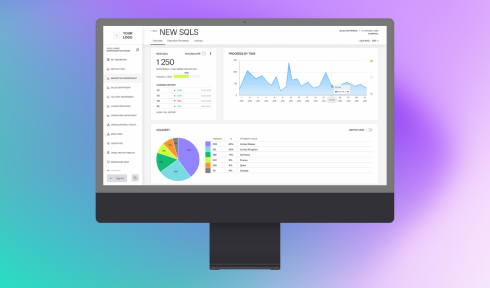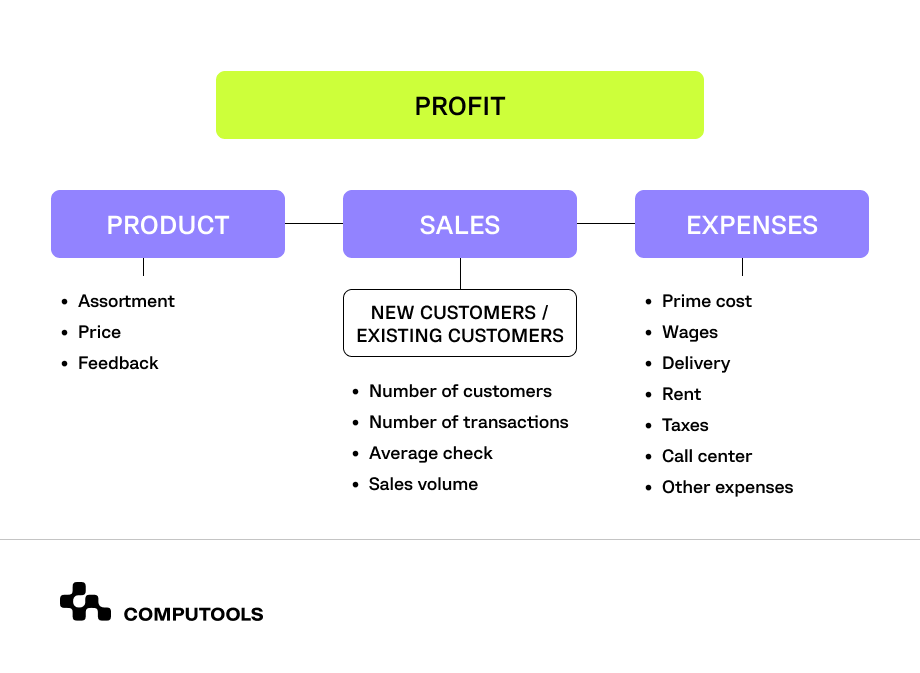What do entrepreneurs want?
Every entrepreneur’s most important goal is profit, and better it is big and long-term. When we speak of a business capable of showing big results, we mean a well-established and well-adjusted system. The company is an entity, and the business is the system according to which this entity functions. Depending on the company’s size, each person or department solves specific tasks, all leading to the end goal; SUCCESS!
There are basic laws of how a business system functions:
1. A business system is the interrelationship of all functional elements; achieving the result becomes problematic if one is disrupted.
2. The system’s goals are achieved by performing operations. The quality of each goal achieved depends on the accuracy and quality of all operations.
3. Relationships between the elements of the business system can be different: those that improve, deteriorate, or in no way affect. The task of the people in charge is to improve the first two and reduce the last one.
When we perceive a business as a mechanism, we see the basic principles of its work, which one can continually improve. Continuous improvement leads to business growth and scaling: a small business turns into a medium one, and a medium one into a big one.
Making small businesses grow
Scaling a company globally means increasing its growth. This growth can be vertical, horizontal, or both. By this, we suggest increasing the number of employees, expanding locally, expanding the market, expanding the range of products or services, etc.
However, besides the apparent spheres for scaling, it’s also necessary to improve processes, increase staff skills, and improve the system of interaction and performed operations.
Roughly speaking, the owner and managers must create a favorable environment for the development and expansion of the organization. At any growth stage, they may encounter external or internal factors that negatively impact processes. For this reason, the challenge is to improve key success factors.
Improving success factors is a task that takes time to complete. Therefore, companies must constantly think of ways to improve.
Business success metrics
When a small business is tasked with scaling, it first needs to identify its key success factors. These will be the metrics to rely on when analyzing what areas and operations need to be improved.
It’s important to analyze from the business owner’s perspective as well as from the perspective of the customer. There are always several KSFs (Key Success Factors), so it’s important to define them clearly and then line them up in the correct sequence.
Entrepreneurs must understand customer preferences perfectly and be able to anticipate them ahead of time. It means that it’s necessary to constantly monitor the success of their goods and services, introduce new ones, and develop forward-looking plans to improve the goods and services. This includes the way they’re sold, improve interactions within the company, operational movements, and so on.
Related Experience

Computools' Product: Scaler
Systemize and scale your business with our intuitive, secure Scaler Cloud Platform - all by yourself, guided by your own business intuition and our proven methodology
How to scale a small businesses to a medium business
A business leader must think systematically, properly adjust information, and make real-world to-do lists. Profit always consists of products, sales, and expenses. These elements are the same in all types of businesses. Therefore, an integral part of scaling a small business into a small enterprise is continuous improvement of each of these blocks’ performance:

Figuratively speaking, you can divide a company’s profits into categories of improvement to see its components. Constant work on the components, and growth of even 1% of each, can significantly increase profits and directly contribute to business growth and scaling.
There needs to be more than just an understanding of KSFs. First, it’s essential to identify them or even write them down. The next important step is measuring them. It’s necessary to understand what actions led to positive results, who was involved in these actions, and how long it took. A measured KSF allows for targeted improvement, and the ability to create a business scaling strategy plan.
The next task is to appoint a person in charge, a manager who has in-depth knowledge of the domain to be improved. It can be a new hire, or it can be someone from the existing team. They do not have to be a professional in all improvement aspects. The main thing is to understand perfectly the domain to which they have been assigned.
After the manager is appointed, it is necessary to automate the measurement of all the results achieved within this direction so that you can:
• See the actual results and dynamics of their changes on the dashboard rather than listening to the reports of your subordinates.
• Work on plans to improve the results collected by the system during meetings, and be focused on making decisions to improve business processes in this area rather than hearing managers’ results since you will know the progress at any time.
To digitize the results, you can use third-party applications, various CRM systems, HRM systems, marketing automation, manufacturing automation, accounting, etc., or you can create your system adapted to the business and unique business operations, including data collection for analysis. Usually, small companies prefer to use third-party applications, and medium-sized businesses can start thinking about their system to modernize all business processes, including data collection and automation of various business operations through their own IT system to grow into a large business.

Computools
Software Solutions
Computools is an IT consulting and software engineering company that delivers innovative solutions to help businesses unlock tomorrow. Our clients represent a wide range of industries, including retail, logistics, finance, healthcare, and others.
What Computools offers to scale your business
Computools has ample experience building system businesses capable of growing and increasing revenues.
We help companies scale and achieve great results through clearly established steps:
1. Decomposing the product, sales, and expenditure of your business.
2. Identifying key business success factors for business scaling.
3. Setting goals to drive growth in the key success factors.
4. Digitize metrics, so you have dashboards for each aspect of your business operations.
5. Modernizing and automating business operations depending on your key success factors.
Computools helps to systematize business operations to put the business on the rails of systematic management, instead of spontaneous, to remove any “fires” and unpredictable results in the business that can lead to collapse or stagnation. We will display the main indicators of your business success by creating a Business Intelligence system, identifying key success factors, decomposing them into categories of improvement, digitizing, and building processes of your business operations to systematically improve their results and automate those operations that can be automated.
How the business intelligence system contributes to business growth
Business Intelligence system solves the problem of organizing data and reading it from other business operational services such as CRM, HRM, Marketing systems, etc. This allows you to make more effective system decisions to modernize the execution of business operations, increase efficiency and transparency, increase sales results, and potentially reduce costs through optimizations. Our company helps to create a Business Intelligence system and configure it to achieve the above results.
Successful implementation of a BI System allows for the transformation of the company’s processes into a comprehensive solution, and ensures the smooth operation of all tools used. The system automatically calculates Key Performance Indicators in a solid complete timely comparative information (SCTCI) format.
Another bold plus of Business Intelligence System implementation is accelerating the speed of reporting, as the system eliminates manual labor. Reporting is based on big data analysis and eliminates the human factor.
A BI System is also a powerful analytical tool, capable of tracking and analyzing data in real-time. With fast accurate data, decision-making becomes faster and more effective. Implementing Artificial Intelligence helps professionals understand the direction thanks to predictive capabilities and the accurate assessment of alternatives. Artificial Intelligence does not take over the decision-making function but is an indispensable advisor.
A BI System has some undeniable advantages for scaling a business:
• Minimization of errors and the human factor;
• Reduction of administrative costs;
• Data visualization;
• Reduction of incorrect management decision risks.
There’s one primary rule of implementing business process automation: it must be performed step by step and start with the areas where data entry can significantly hamper processes. The development and implementation of such a system can take from 3 months to 3 years, it all depends on the size of your business and the number of business operations.
To customize your company’s collaboration functions, eliminate the risk of human error, and optimize processes, contact us at info@computools.com.









“Computools was selected through an RFP process. They were shortlisted and selected from between 5 other suppliers. Computools has worked thoroughly and timely to solve all security issues and launch as agreed. Their expertise is impressive.”